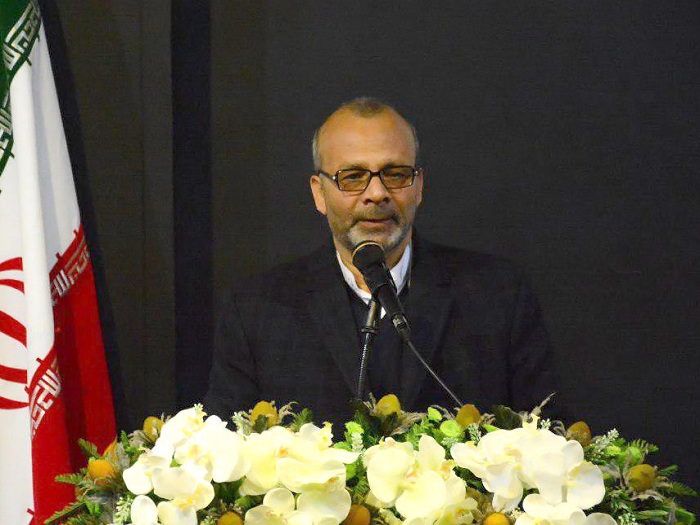The spa towns of Mahallah city need serious consideration

Provincial Governor: Mining activities in the area and the inaccuracy of their licensing have disrupted the composition and shape of the spa district of Mahallat so that even the water temperature and temperature have changed and require special attention.
According to the International Stone Exhibition of Iran, Mahmoud Zamani Qom, the central governor at a joint meeting of the Administrative Council and the Arak Air Pollution Reduction Working Group, chaired by the head of the country's environmental organization, has taken action over the past two years to reduce air pollution. Air pollution has been noted in Arak and other cities.
He supplied gas to brick kilns, commenced the execution of automobile settlements, as well as administered ninety acres of land to transmit annoying pines, holding twenty-seven sessions of the Air Pollution Reduction Task Force, Shazand Power Plant Gas, Iralco Old Line Improvement - Although it was not done in the scheduled timeframe - it was part of the environmental measures taken over the past two years, adding: "Of course these were not enough and did not lead to complete satisfaction." The provincial complex will by no means fall short of working group approvals and will do its utmost to pursue the people's rightful demands.
Referring to the decrease of unhealthy days in Arak, he said: In 2013, we saw one hundred and fifteen unhealthy days in Arak city, which reached fifty days in 2014. We have also spent fourteen unhealthy days in the fourth quarter of this year, up from twenty-five days over the same period, indicating an improving trend, indicating that provincial and national action is working. have been.
The central governor referred to the need to address the status of wastewater that requires serious decision and the need to use it in green space irrigation adding: Arak green space must be developed and we must reach the per capita standard of green space.
He said about the status of the Iranian Aluminum Factory: "The operations and performance of this factory have been thoroughly reviewed and studies show that there have been accidents in the last ten years." The workgroup and the provincial administration are on the verge of imposition, and the work must not reach the stage where we have to face decisive action. The Iran Minerals Plant, located in Miqan Wetland, will also be examined, with all documents reviewed and appropriate decisions taken.
Qami continued to point to the shortage of EOF forces as well as environmental problems.
Regarding the environmental status of the neighborhoods of the neighborhoods and the activity of the mines that have led to the destruction of the spa town, he said: The spa towns are unique districts in Iran, but the activities of the mines in this area and the inaccuracies in the licensing of the activity They have disrupted the composition and shape of the spa town of Mahallat so that even the water temperature and temperature have changed and need special attention.
"We call for this issue to be discussed with the Ministry of Industry to be resolved through the government," he said.
Thirty percent of the province's deserts are prone to dust production
Hosseinali Ebrahimi Karnami, Director General of Environmental Protection of Markazi Province, also presented a complete report of the approvals of the Air Pollution Reduction Working Group, citing the lack of financial resources as the main reason for the lack of implementation, and further highlighted the most important problems of desertification and drought.
He added: Forty-nine thousand hectares of land in the central province of the desert, thirty percent of which are prone to dust. The most important dust center in the Miqan Wetland Province is twelve thousand hectares with 100 tons of wind erosion per hectare. Alongside the Meqan Wetland, the Zarandieh Desert with 15,000 hectares, Mahmoudiyah with 5,000 hectares, and Delijan with 10,000 hectares are the center of dust production.
Ebrahimi Karnamami Imbalance between Rangeland Capacity and Livestock Grazing, Lack of Funding to Rebuild Miqan Wetland, Lack of Funding to Implement Two Thousand Hectares of Green Space with the Participation of Shazand Petrochemical, Refinery and Power Plant, Full Arak Air Quality Monitoring Center Complete Manpower in the monitoring of protected areas described the establishment of water industries in the province as part of the existing problems in the central province and demanded that the executive agencies respond to correspondence through the province's general environment administration.
During the meeting, Mehdi Zandieh Vakili, deputy governor of central government, also pointed to the relative improvement of Arak air compared to the previous visit of the head of the environment to the province. He stated that, fortunately, Arak has been subject to urban trains and besides, the revision of the master plan reduction. Arak air pollution has been approved in terms of credits, and the budget for the year 2016 will be projected.
Zandieh Vakili, pointing out that more than ten to fifteen percent of the total approvals have not been implemented, said: "We hope that before the presidential visit to the province, a comprehensive plan to reduce Arak air pollution will be supported, and be sure to include it in the budget. To be taken.

Subsequent to this meeting, Sayyid Ahmad Sajjadi, the Governor of Mahalat, pointed to the demolition of the Mahalat spa by mining activities, saying: "If mines had not been licensed for the past ten years, we would have witnessed a lot through this area today."
He further referred to the situation of Nimar city in the corner of Mouteh Protected Area which is shared with Isfahan province and said the area is 800 and 14 hectares and said: During the last twenty years the construction of residential and residential areas More than a hundred industrial units in the area have been affected by its habitat value, and we call for the replacement and incorporation of this area with part of the national land with an area of seven hundred and fifty-three hectares.
* ISNA










